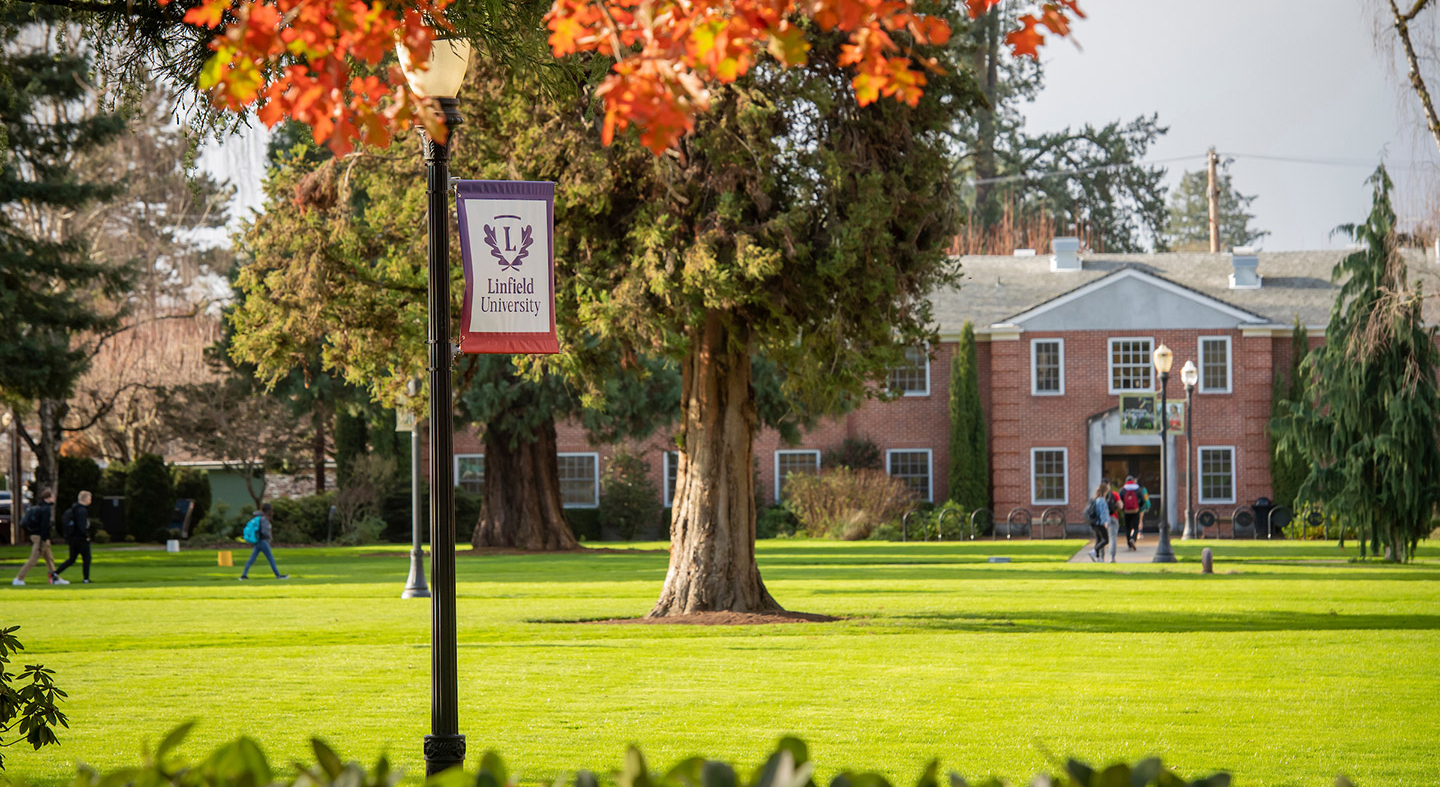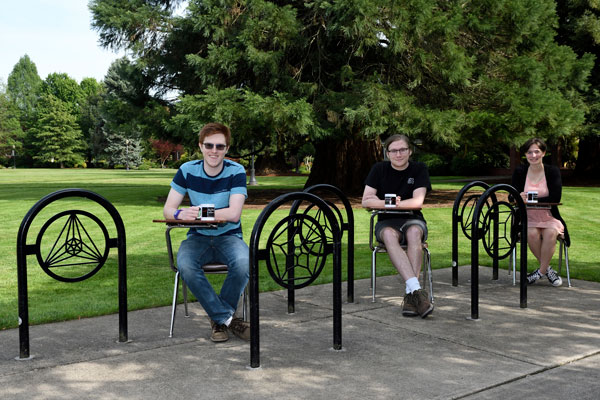
Beyond the Classroom
Interested in authentic research experience?
Our faculty frequently collaborate with Linfield students in research projects, generally during the summer, and often funded by a Linfield Student-Faculty Collaborative Research Grant. Here we highlight a few ongoing research projects.
Competitive Graph Coloring
Two players, Alice and Bob, alternate coloring the vertices of a graph from a fixed list of colors in such a way that adjacent vertices receive different colors. Alice, the first player, wins the game if the entire graph is eventually colored.
One might wonder, what is the least number of colors needed to ensure that Alice has a winning strategy?
To study this question is to do research in competitive graph coloring. Professors Dunn and Nordstrom have mentored more than 25 students in this area, resulting in three published papers and a book chapter. These publications include 14 undergraduate co-authors.
Mathematical Modeling via Differential Equations
Would you like to model the spatial spread of a favored gene in a population or the population dynamics of a terrorist organization? Professor Bricher has worked with many students on a variety of mathematical modeling problems such as these that use the power of differential equations. View an example of Professor Bricher's work in this area.
The Mathematics of Tiling
Can a given region be tiled by a particular set of tiles? A well-crafted tiling question can utilize a wide range of undergraduate math tools to solve, such as linear algebra, number theory, group theory and topology. Professor Hitchman has mentored eight students in tiling research.
This collaborative work has resulted in at least six regional and national student presentations and has led to four publications.
What’s a little competition among friends?
In your mathematics studies at Linfield, you also have the opportunity to participate in these competitive models of learning.
COMAP Mathematical Contest in Modeling (MCM)
How does ice melt in Greenland affect sea level in Florida? How can we build a more efficient toll booth system? Teams of three use mathematical modeling to present solutions to real-world problems, such as these, all over one long weekend in late winter for MCM.
Earn one credit for participating in the contest by enrolling in the spring semester course, Math Modeling Experience (MATH 280).
 Kryptos
Kryptos
Kryptos is a cryptanalysis (breaking codes and ciphers) contest held in the middle of April every year. Work alone or in small groups to unscramble a series of secret messages posted online by the Kryptos hosts. Teams are ranked at the end of the weekend based on how many challenges they solve and how quickly they do so.
Putnam Exam
The William Lowell Putnam Competition is a challenging mathematics competition held every year for undergraduate students in North America. Discover more information on this, exam including registration dates and deadlines.
Intern in all areas of mathematics and computer science
Linfield's Office for Career Development provides career counseling, tools and resources to help you explore opportunities in math and computer science. The office connects you with employers by hosting seminars, lunches with alumni and career fairs.
Over the years, some of our students have interned at companies such as:
- Digital Foundry
- Dotcast Inc.
- Go Daddy
- Griggs Anderson Research
- Insitu Inc.
- Intel Corporation
- LVSYS Corp.
- Mentor Graphics
- Rasmussen Software Inc.
- U.S. Department of Defense
You can also apply to work in on-campus positions, too!
